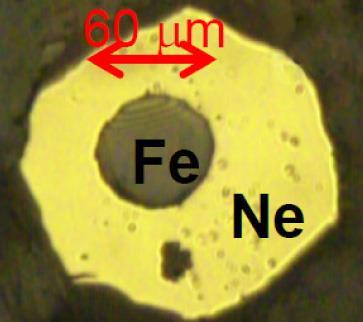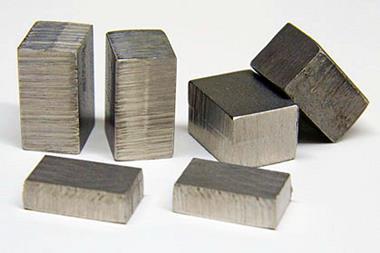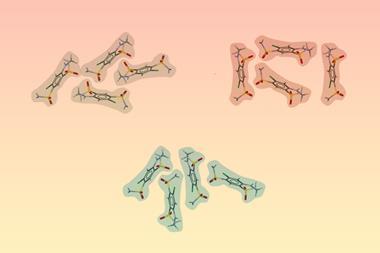High-pressure elemental studies have recreated the phase of iron believed to form up to 90% of the Earth’s core. Subsequent analysis of the elastic properties of this material help to explain why seismic waves from an earthquake travel 4% faster pole-to pole than across the equator.
The material properties of the Earth’s interior have a huge impact on life: movement in the mantle shifts the tectonic plates and the liquid outer core, formed of an alloy of iron and nickel, is responsible for the Earth’s magnetic field. Extreme pressures mean that this molten mixture is compressed into a solid crystal phase called ε-iron within the inner core, but little is known about the properties or wider implications of this pressurised material as neither theory nor experiment have successfully replicated the intense conditions present in the central part of the core. However, experts have theorised that certain physical properties of ε-iron could account for the Earth’s unusual seismic behaviour. ‘The Earth’s inner core behaves anisotropically, meaning it exhibits different properties in different directions,’ explains Jie (Jackie) Li, a mineral physicist at the University of Michigan, US. ‘As a result, seismic waves travel through the inner core at different speeds in the polar and equatorial directions.’
Now, a team led by Agnès Dewaele at Paris-Saclay University in France has found a way to experimentally recreate single crystals of this high-pressure iron polymorph, performing the first ever x-ray analysis of its stress and elastic properties. ‘Single crystal ε-iron is challenging to form [directly from] ambient α-iron because the transformation which creates it inevitably destroys single crystals,’ explains Dewaele. ‘[Rather than attempt] a direct transformation, we went through a third phase (known as γ-iron), stable only under high temperatures, and this way we could keep the samples under a single crystal form’.

Using a diamond anvil cell, the team compressed samples of α-iron at 7GPa, raising the temperature to around 800K to induce the transformation to γ-iron crystals. As the pressure increased further, the γ-iron slowly transformed into the elusive ε-structure, forming stable single crystals suitable for x-ray analysis. These experimental measurements confirmed the suspected directionally-dependent elasticity of ε-iron, with vibrations travelling 4.4% faster through one axis of the crystal.
The team were keen to support these observations with theoretical calculations but existing modelling techniques are notoriously unreliable for iron systems. ‘In iron, the electrons have strong interactions between each other which is quite rare. This is extremely difficult to model because there are as many interactions as [pairs] of electrons, plus [these interactions] vary with time,’ explains Dewaele. ‘We used a computational method (combining density functional theory with dynamical mean field theory) which better describes these interactions,’ she adds. This combined approach appropriately accounted for the pressure and bond strength effects within the iron crystals and effectively reproduced the experimental result. Dewaele’s combined model effectively reproduced the experimental results and the team are continuing to explore how this could be applied to other metal systems under extreme conditions.
Li was particularly impressed with the experimental aspects of the work and is interested to see how these technical developments will affect the field. ‘The authors combined advanced experimental and theoretical techniques to acquire high-quality data on the elasticities of ε-iron,’ she says. ‘It would be great if the researchers could extend the experimental measurements to higher pressures and temperatures, and examine the effects of impurities in the iron on the elastic properties.’
References
A Dewaele and B Amadon, Phys. Rev. Lett., 2023, 131, 034101 (DOI: 10.1103/PhysRevLett.131.034101)

















1 Reader's comment